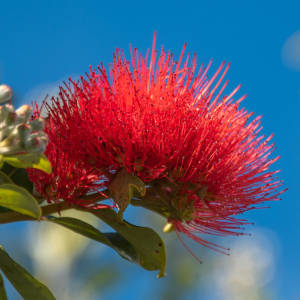A Row of Beatuiful Golden Willows
Today was sunny at times but there is a lot of high cloud about. I took a walk along the Avon River and thought the Willows looked so beautiful in the sunlight. They are the last to lose their leaves and the first to get them again.
There are about 350 species of willow, all members of the genus Salix. They are native to the northern hemisphere, and usually are found growing on moist soil in cool regions.
The willow has traditionally been associated with both fertility and death. Infertile women in classical Athens were advised to place willow branches in their beds, and most of the Biblical allusions to willow are associated with fertility.
Funeral torches in ancient Rome were made of willow wood. One traditions says that Babylonian soothsayers foretold the premature death of Alexander the Great after seeing a willow bough brush the crown from his head as he crossed the Euphrates. In the middle ages and after, it was a common custom to put a willow branch in each coffin and to plant a willow tree near graves.
Weeping willow trees are used to create many useful items ranging from sports equipment to medicine.
Willow trees produce an abundant, milky sap. Within the sap is a substance called salicylic acid. In 1763, a British minister named Edward Stone did experiments on willow sap and identified and isolated salicylic acid. The acid caused too much stomach upset to be widely used until 1897 when a chemist named Felix Hoffman created a synthetic version which was gentle on the stomach. His company, Bayer, produced his invention as the first aspirin.
Willows are literally used for art. Artists' sketching charcoal is often made from processed willow bark and trees.
Willows are symbolic of death thanks to their weeping form. If you look carefully at paintings and pictures from the Victorian era, you can sometimes spot a funeral painting, or artwork commemorating the death of someone, by the weeping willow tree and other symbols in the picture.
In literature, the most famous literary reference to the willow is perhaps William Shakespeare's Willow Song in Othello. Desdemona, the heroine of the play, sings the song in her despair. You can hear an example and read the musical score and words on Digital Tradition. Many composers have set this song to music, but the version on Digital Tradition is one of the oldest. The earliest written record of The Willow Song is from 1583 and was written for the lute, a stringed instrument like a guitar but with a much softer sound. Shakespeare uses the symbolism of the willow again in Hamlet, when doomed Ophelia breaks willow branches and tosses them into the river where she eventually drowns herself. Willows are referenced also in Twelfth Night.
If you're a J.K. Rowling fan, you'll note the willow is also an important character in the Harry Potter book series. The Whomping Willow is a tree with attitude that lives on the Hogwarts grounds and guards the entrance to a tunnel leading to the Shrieking Shack, where the character of Professor Lupin goes when he turns into a werewolf.
For more interesting facts on the Weeping Willow trees.

Comments
Sign in or get an account to comment.


